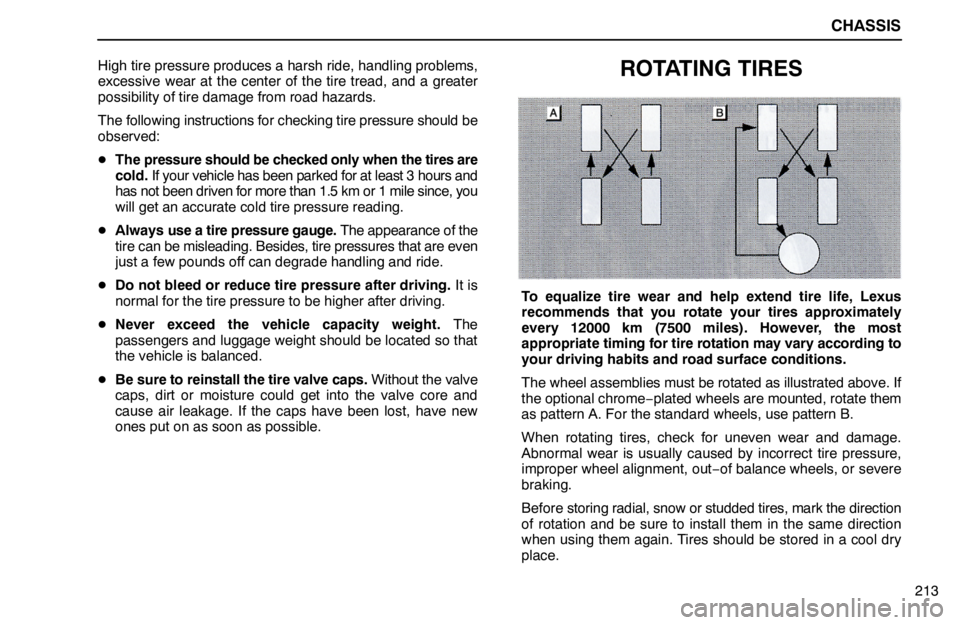CHASSIS
213 High tire pressure produces a harsh ride, handling problems,
excessive wear at the center of the tire tread, and a greater
possibility of tire damage from road hazards.
The following instructions for checking tire pressure should be
observed:
�The pressure should be checked only when the tires are
cold. If your vehicle has been parked for at least 3 hours and
has not been driven for more than 1.5 km or 1 mile since, you
will get an accurate cold tire pressure reading.
�Always use a tire pressure gauge. The appearance of the
tire can be misleading. Besides, tire pressures that are even
just a few pounds off can degrade handling and ride.
�Do not bleed or reduce tire pressure after driving. It is
normal for the tire pressure to be higher after driving.
�Never exceed the vehicle capacity weight. The
passengers and luggage weight should be located so that
the vehicle is balanced.
�Be sure to reinstall the tire valve caps. Without the valve
caps, dirt or moisture could get into the valve core and
cause air leakage. If the caps have been lost, have new
ones put on as soon as possible.
ROTATING TIRES
To equalize tire wear and help extend tire life, Lexus
recommends that you rotate your tires approximately
every 12000 km (7500 miles). However, the most
appropriate timing for tire rotation may vary according to
your driving habits and road surface conditions.
The wheel assemblies must be rotated as illustrated above. If
the optional chrome−plated wheels are mounted, rotate them
as pattern A. For the standard wheels, use pattern B.
When rotating tires, check for uneven wear and damage.
Abnormal wear is usually caused by incorrect tire pressure,
improper wheel alignment, out−of balance wheels, or severe
braking.
Before storing radial, snow or studded tires, mark the direction
of rotation and be sure to install them in the same direction
when using them again. Tires should be stored in a cool dry
place.
